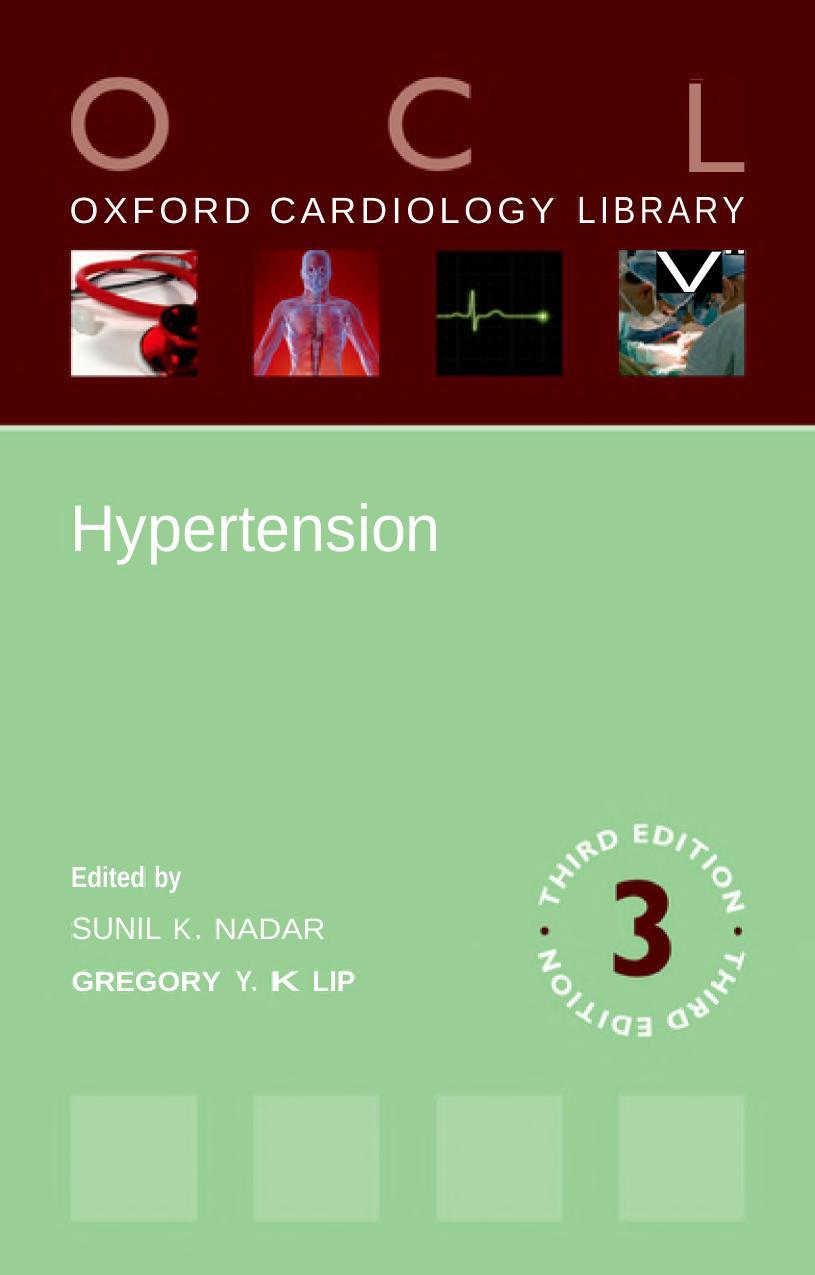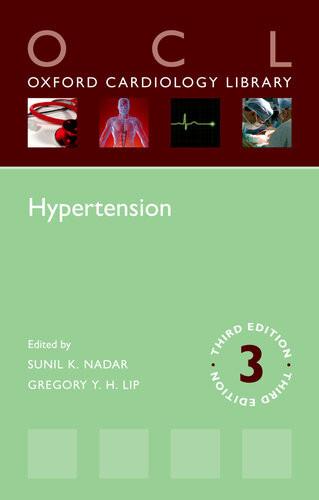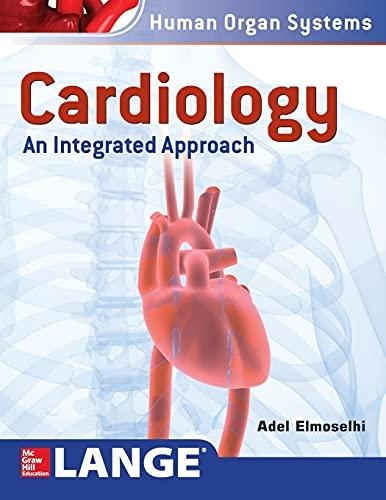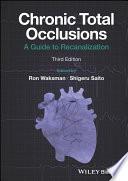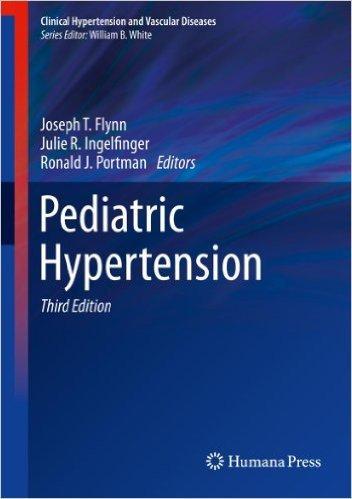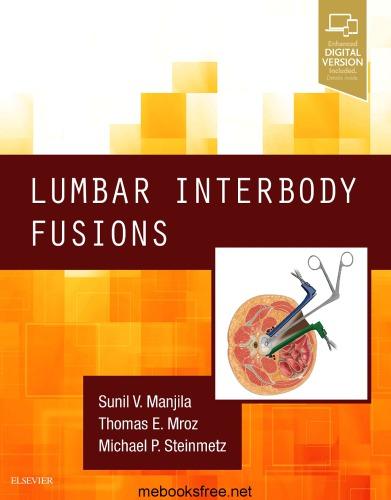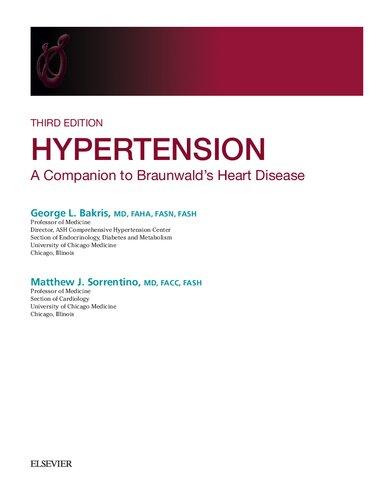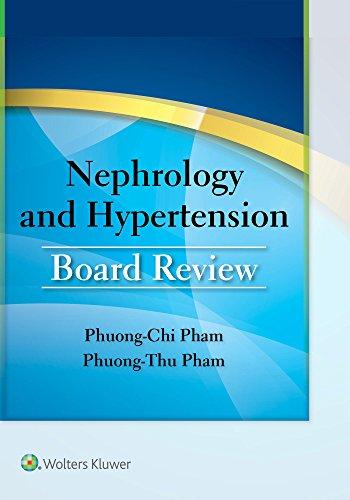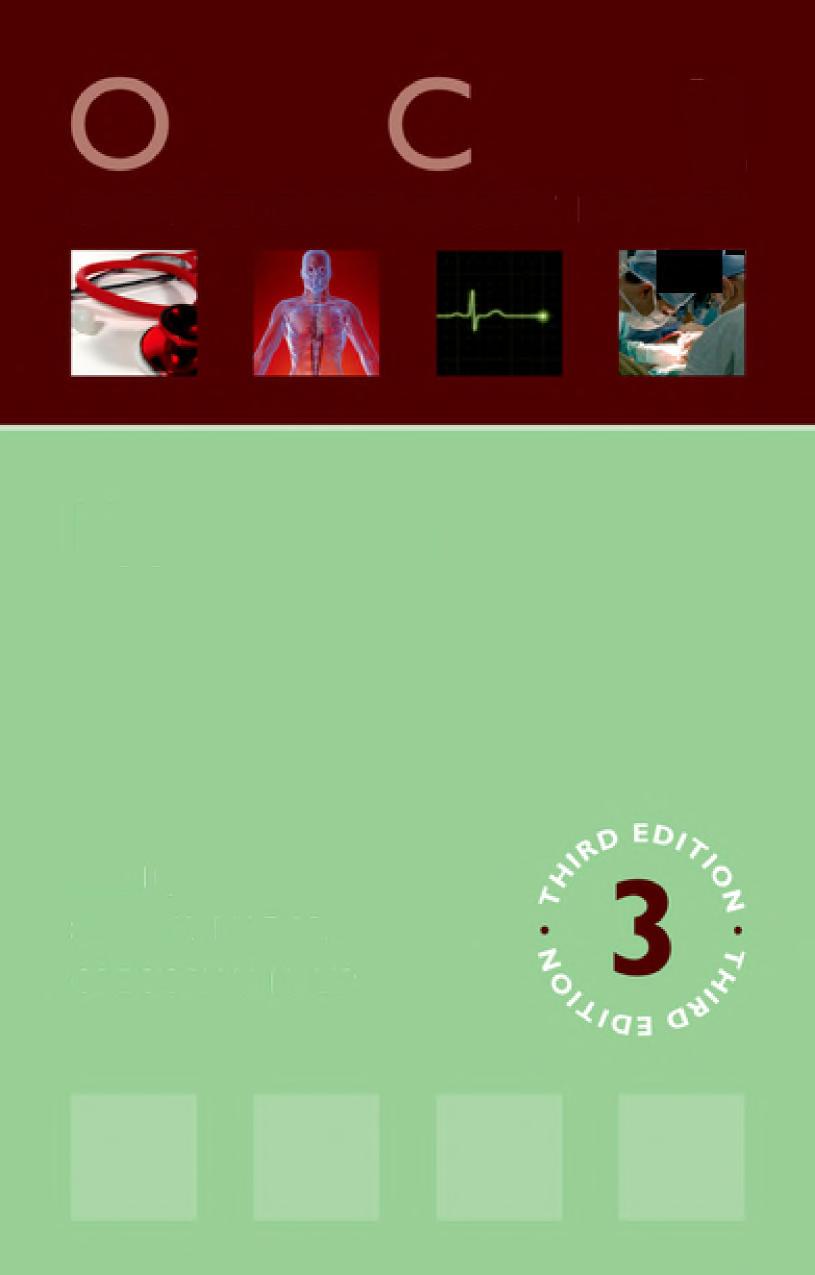Contributors
Sarah Ahmad , Nephrology Fellow, Renal-Electrolyte and Hypertension Division, Department of Medicine, Perelman School of Medicine, University of Pennsylvania, Philadelphia, PA, USA
Asangaedem Akpan, Consultant Geriatrician, Liverpool University Hospitals NHS Foundation Trust, Liverpool, UK; Visiting Professor, University of Cumbria, Carlisle, UK; Honorary Associate Professor, University of Liverpool, Liverpool, UK; Ageing Specialty Research Group Lead, CRN NWC, Liverpool, UK
Hatim Al-Lawati, Senior Consultant Cardiologist, Department of Medicine, Sultan Qaboos University Hospital, Muscat, Oman
Mohammed Najeeb Al-Rawahi, Consultant Cardiac Electrophysiologist, Sultan Qaboos University Hospital, Muscat, Oman; Department of Cardiology, National Heart Center, Muscat, Oman
Hassan Al-Riyami, Head Nurse Cardiac Catheter Lab and Interventional Radiology, Directorate of Nursing, Sultan Qaboos University Hospital, Muscat, Oman
Benjamin J. R. Buckley, Research Fellow, Liverpool Centre for Cardiovascular Science, University of Liverpool and Liverpool Heart and Chest Hospital, Liverpool, UK
Jordana B. Cohen, Assistant Professor of Medicine and Epidemiology, Renal-Electrolyte and Hypertension Division, Center for Clinical Epidemiology and Biostatistics, Perelman School of Medicine, University of Pennsylvania, Philadelphia, PA, USA
Daniel J. Cuthbertson, Acute Medicine Consultant at University Hospital Aintree, Liverpool, UK, and Reader and Honorary Consultant Physician in the Department of Cardiovascular and Metabolic Medicine at the University of Liverpool
Christian Delles, Professor of Cardiovascular Prevention and Honorary Consultant Physician, School of Cardiovascular and Metabolic Health, University of Glasgow, Glasgow, UK
Stephanie J. Finnie, Trust Grade Doctor, Department of Medicine, Royal Liverpool University Hospital, Liverpool, UK
Harsh Goel, Consultant Physician, Department of Medicine, St Luke’s University Hospital, Bethlehem, PA, USA; Associate Professor of Medicine, Lewis Katz School of Medicine, Temple University, Philadelphia, PA, USA
Arunodaya R. Gujjar, Professor of Neurology, Department of Medicine (Neurology), College of Medicine and Health Sciences, Sultan Qaboos University, Muscat, Oman
Stephanie L. Harrison, Lecturer, Liverpool Centre for Cardiovascular Science, University of Liverpool, Liverpool, UK
James Hatherley, Department of Medicine, Liverpool University Hospital Foundation Trust, Liverpool, UK
Vikas Kapil, Senior Lecturer and Consultant Physician, Clinical Pharmacology and Cardiovascular Medicine, Barts BP Centre of Excellence, St Bartholomew’s Hospital, Barts Health NHS Trust, London, UK; Centre for Cardiovascular Medicine and Devices, William Harvey Research Institute, Queen Mary University, London, UK
Ashish Kumar, Consultant Hospitalist, Department of Medicine, Wellspan York Hospital, York, PA, USA; Clinical Assistant Professor of Medicine, Sidney Kimmel Medical College at Thomas Jefferson University, Philadelphia, PA, USA
Deirdre A. Lane, Professor of Cardiovascular Health, Liverpool Centre for Cardiovascular Science, University of Liverpool and Liverpool Heart and Chest Hospital, Liverpool, UK; Aalborg Thrombosis Research Unit, Department of Clinical Medicine, Aalborg University, Aalborg, Denmark
Chim C. Lang, Head, Division of Molecular and Clinical Medicine, School of Medicine, University of Dundee, Dundee, UK; Editor-in-Chief, Cardiovascular Therapeutics, Chairman–Heart Failure Working Group, Managed Clinical Network for CHD, Dundee, UK
Gregory Y. H. Lip, Price-Evans Chair of Cardiovascular Medicine, University of Liverpool, UK; National Institute for Health Research (NIHR) Senior Investigator; Consultant Cardiologist (Hon), Liverpool Heart & Chest Hospital NHS Trust, Liverpool, UK
Peck Lin Lip , Consultant Ophthalmologist (Medical Retina Specialist), Honorary Senior Lecturer, University of Birmingham, Birmingham and Midland Eye Centre, Sandwell and West Birmingham NHS Hospitals Trust, Birmingham, UK
Stephanie Lip, Specialist Registrar in Clinical Pharmacology and Therapeutics and General Internal Medicine, Queen Elizabeth University Hospital, Glasgow, UK
Chen Liu, Professor of Cardiology, Department of Cardiology, the First Affiliated Hospital of Sun Yat-Sen University, Guangzhou, Guangdong, China
Sheon Mary, Research Associate, School of Cardiovascular and Metabolic Health, BHF Glasgow Cardiovascular Research Centre, University of Glasgow, Glasgow, UK
Ify R. Mordi, Clinical Senior Lecturer and Consultant Cardiologist, University of Dundee and Ninewells Hospital and Medical School, Dundee, UK
Sunil K. Nadar, Senior Consultant Cardiologist, Department of Medicine, Sultan Qaboos University Hospital, Muscat, Oman
Sandosh Padmanabhan, Professor of Cardiovascular Genomics and Therapeutics, Institute of Cardiovascular and Medical Sciences, University of Glasgow, Glasgow, UK
Shankar Patil, Specialist Registrar, Leeds Teaching Hospitals NHS Trust, Leeds, UK
Giacomo Rossitto, Institute of Cardiovascular and Medical Sciences, BHF Glasgow Cardiovascular Research Centre, University of Glasgow, Glasgow, UK; Dipartimento di Medicina, DIMED, Università degli Studi di Padova, Padova, Italy
Thomas Salmon, Internal Medical Trainee, Warrington and Halton Teaching Hospitals NHS Foundation Trust, Warrington, UK
Rajiv Sankaranarayan, Heart Failure Clinical Lead (Aintree University Hospital and Community), Consultant Cardiologist, NIHR Research Scholar and Honorary Clinical Lecturer (University of Liverpool), Liverpool Centre for Cardiovascular Science, Liverpool University Hospitals NHS Foundation Trust, Liverpool, UK
Alena Shantsila, Tenure Track Fellow, Cardiovascular & Metabolic Medicine, University of Liverpool, Liverpool, UK
James P. Sheppard, University Research Lecturer, Wellcome Trust/Royal Society Sir Henry Dale Fellow, Nuffield Department of Primary Care Health Sciences, University of Oxford, Radcliffe Primary Care, Radcliffe Observatory Quarter, Oxford, UK
Gurbhej Singh, Assistant Professor of Cardiology, Dayanand Medical College and Hospital (Unit Hero DMC Heart Institute), Ludhiana, India
Gurpreet Singh Wander, Professor and Head of Cardiology, Dayanand Medical College and Hospital (Unit Hero DMC Heart Institute), Ludhiana, India
Jan A. Staessen, Professor Emeritus, Studies Coordinating Centre, Research Unit Hypertension and Cardiovascular Epidemiology, KU Leuven Department of Cardiovascular Diseases, University of Leuven, Campus Sint Rafaël, Kapucijnenvoer, Leuven, Belgium; Research Institute Alliance for the Promotion of Preventive Medicine, Mechelen, Belgium
Michael Stowasser, Director, Hypertension Unit, Princess Alexandra Hospital, Director, Endocrine Hypertension Research Centre, University of Queensland Diamantina Institute, Brisbane, Australia
Muzahir Tayebjee, Consultant Cardiologist, Leeds Teaching Hospitals NHS Trust, Leeds, UK
Gloria Valdés, Professor Emeritus, Departamento de Nefrología, Facultad de Medicina, Pontificia Universidad Católica, Santiago, Chile
Fang-Fei Wei, Associate Professor, Research Unit Hypertension and Cardiovascular Epidemiology, KU Leuven Department of Cardiovascular Diseases, University of Leuven, Leuven, Belgium; Department of Cardiology, the First Affiliated Hospital of Sun Yat-Sen University, Guangzhou, Guangdong, China
Martin Wolley, Consultant Nephrologist, Department of Renal Medicine, Royal Brisbane and Women’s Hospital, Hypertension Unit, Princess Alexandra Hospital, University of Queensland, Brisbane, Australia
Yuichiro Yano, Associate Professor, Duke University School of Medicine, Durham, NC, USA; Vice Director, Center for Novel and Exploratory Clinical Trials, Associate Professor, Yokohama City University, Yokohama, Japan
List of symbols and abbreviations
ABC Ascertaining Barriers to Compliance
ABPM ambulatory blood pressure measurement/monitoring
ACC American College of Cardiology
ACCORD The Action to Control Cardiovascular Risk in Diabetes
ACE angiotensin-converting enzyme
ACE2 angiotensin-converting enzyme 2
ACEI angiotensin-converting enzyme inhibitor
ACTH adrenocorticotrophic hormone
ADA American Diabetes Association
ADVANCE Action in Diabetes and Vascular Disease-PreterAx and DiamicroN Controlled Evaluation
AF atrial fibrillation
AHA American Heart Association
AHI Apnoea-Hypopnoea Index
ALLHAT Antihypertensive and Lipid-Lowering Treatment to Prevent Heart Attack Trial
ALTITUDE The Aliskiren Trial in Type 2 Diabetes Using Cardiorenal Endpoints
AMI acute myocardial infarction
ANP atrial natriuretic peptide
AOBP automated office blood pressure
APA aminopeptidase A
ARA2 angiotensin II receptor antagonist
ARB angiotensin receptor blocker
ARIC Atherosclerosis Risk in Communities
ARNI angiotensin receptor–neprilysin inhibitor
ASCOT Anglo-Scandinavian Cardiac Outcomes Trial
ASCOT-BPLA Anglo-Scandinavian Cardiac Outcomes Trial-Blood Pressure Lowering Arm
ASCVD atherosclerotic cardiovascular disease
ASE American Society of Echocardiography
ASPIRANT Addition of spironolactone in patients with resistant arterial hypertension
ASTRAL Angioplasty and Stent for Renal Artery Lesions
ATP adenosine triphosphate
AT-R1 angiotensin type 1 receptor
AV arteriovenous
BIHS British and Irish Hypertension Society
BMI body mass index
BNP brain natriuretic peptide
BP blood pressure
Ca2+ calcium
CAA cerebral amyloid angiopathy
CAFE Conduit Artery Functional Endpoint
cAMP cyclic adenosine monophosphate
CCB calcium channel blocker
CCS Canadian Cardiovascular Society
cGMP cyclic guanosine monophosphate
CHARM Candesartan in Heart Reduction in Mortality and Morbidity
CHD coronary heart disease
CHF congestive heart failure
CI confidence interval
CIBIS-II Cardiac Insufficiency Bisoprolol Study II
CKD chronic kidney disease
Cl chloride
CMB cerebral micro-bleed
CNS central nervous system
COMMIT/CCS-2 Clopidogrel and Metoprolol in Myocardial Infarction
Trial/Second Chinese Cardiac Study
CONVINCE Controlled ONset Verapamil INvestigation of Cardiovascular Endpoints
CORAL Cardiovascular Outcomes in Renal Atherosclerotic Lesions
CSVD cerebral small vessel disease
CT computed tomography
CVD cardiovascular disease
DALY disability-adjusted life year
DASH Dietary Approaches to Stop Hypertension
DBP diastolic blood pressure
DENERHTN The Renal Denervation for Hypertension trial
DETAIL Diabetics Exposed to Telmisartan And enalaprIL
DOAC direct oral anticoagulant
DOC deoxycorticosterone
DPP-4 dipeptidyl peptidase 4
ECG electrocardiogram/electrocardiography
EF ejection fraction
eGFR estimated glomerular filtration rate
ELITE Evaluation of Losartan In The Elderly
EMPHASIS-HF
The Eplerenone in Mild Patients Hospitalization and Survival Study in Heart Failure trial
ENaC epithelial sodium channel
EPHESUS Eplerenone Post–Acute Myocardial Infarction Heart Failure Efficacy and Survival Study
ESC European Society of Cardiology
ESCVI European Society of Cardiovascular Imaging
ESH European Society of Hypertension
ESS Epworth Sleepiness Scale
EUROPA
EVA
European trial On Reduction of Cardiac Events with Perindopril in Stable Coronary Artery Disease
Epidemiology of Vascular Ageing
EVT extravillous trophoblast
FIDELIO-DKD
The Finerenone in Reducing Kidney Failure and Disease Progression in Diabetic Kidney Disease trial
FLAIR fluid-attenuated inversion recovery
FRESH Firibastat in Treatment-resistant Hypertension
FMD fibromuscular dysplasia
GBD Global Burden of Disease
GEMINI Glycemic Effect of Diabetes Mellitus: CarvedilolMetoprolol Comparison In Hypertensives
GFR glomerular filtration rate
GH growth hormone
GLP-1 glucagon-like peptide 1
GUSTO-1
Global Utilization of Streptokinase and Tissue Plasminogen Activator for Occluded Coronary Arteries
GWAS genome-wide association studies
HAAS Honolulu-Asia Aging Study
HbA1c glycated haemoglobin
HBPM home blood pressure monitoring
HDL high-density lipoprotein
HDP hypertensive disorders of pregnancy
HELLP haemolysis, elevated liver enzymes, low platelets
HFpEF heart failure with preserved ejection fraction
HFrEF heart failure with reduced ejection fraction
HMOD hypertension-mediated organ damage
HOPE Heart Outcomes Prevention Evaluation
HOPE-3 Heart Outcomes Prevention Evaluation-3
HOT Hypertension Optimal Treatment
HR hazard ratio
HYVET Hypertension in the Very Elderly Trial
ICH intracerebral haemorrhage
IGF-1 insulin-like growth factor 1
IL-6 interleukin 6
INSIGHT
International Nifedipine GITS Study of Intervention as a Goal in Hypertension Treatment
INSPiRED AdenosINe Sestamibi Post-InfaRction Evaluation trial
INTERMAP
International Study of Macro- and Micro-nutrients and Blood Pressure
INTERSALT The International study of Salt and Blood pressure
INVEST International Verapamil Trandolapril Study
ISA intrinsic sympathomimetic activity
ISH International Society of Hypertension
ISIS-1
First International Study of Infarct Survival
ISSHP International Society for the Study of Hypertension in Pregnancy
JNC-7
Seventh Report of the Joint National Committee on Prevention, Detection, Evaluation, and Treatment of High Blood Pressure
K+ potassium
LA left atrial/atrium
LDL low-density lipoprotein
LIFE Losartan Intervention for Endpoint reduction in hypertension
LIVE Left Ventricular Hypertrophy Regression, Indapamide Versus Enalapril
LV left ventricular
LVEDD left ventricular end-diastolic diameter
LVEF left ventricular ejection fraction
LVH left ventricular hypertrophy
MARVAL Microalbuminuria Reduction with VALsartan
MCI minimal (mild) cognitive impairment
MEN multiple endocrine neoplasia
MERIT-HF
Metoprolol CR/XL Randomised Intervention Trial in Congestive Heart Failure
MIAMI Metoprolol In Acute Myocardial Infarction
MINISAL-SIIA
Ministero della Salute
MMAS-8 eight-item Morisky Medication Adherence Scale
MRA mineralocorticoid receptor antagonist
MRC Medical Research Council
MRFIT
Multiple Risk Factor Interventional Trial
MRI magnetic resonance imaging
Na+ sodium
NHS National Health Service
NICE National Institute for Health and Care Excellence
NO nitric oxide
NORDIL
NORdic DILtiazem
NPRA natriuretic peptide receptor agonist
OAT organic acid transporter
ONTARGET
OPTIMAAL
Ongoing Telmisartan Alone and in Combination With Ramipril Global Endpoint Trial
OPtimal Trial in Myocardial Infarction with the Angiotensin II Antagonist Losartan
OSA obstructive sleep apnoea
PARADIGM-HF
Prospective comparison of Angiotensin Receptorneprilysin inhibitor (ARNI) with Angiotensin converting enzyme inhibitor (ACEI) to Determine Impact on Global Mortality and morbidity in Heart Failure
PARADISE-MI
PARAGON-HF
PARAMETER
PATHWAY-2
Prospective ARNI vs ACE Inhibitor Trial to Determine Superiority in Reducing Heart Failure Events After MI
Prospective Comparison of ARNI with ARB Global Outcomes in HF with Preserved Ejection Fraction
Prospective Comparison of Angiotensin Receptor
Neprilysin Inhibitor With Angiotensin Receptor Blocker Measuring Arterial Stiffness in the Elderly
Prevention and Treatment of Hypertension with Algorithm based Therapy-2 trial
PE pre-eclampsia
PEACE
Prevention of Events with Angiotensin-Converting Enzyme Inhibition
PET positron emission tomography
PlGF placental growth factor
PRA plasma renin activity
PRESERVE
PREVER-Prevention
PROGRESS
PROSPER
Prospective Randomized Enalapril Study Evaluating Regression of Ventricular Enlargement
Prevention of Hypertension in Patients with Pre-hypertension
Perindopril Protection Against Recurrent Stroke Study
Pravastatin in Elderly Individuals at Risk of Vascular Disease
PTH parathyroid hormone
PTWD posterior wall thickness
PVD peripheral vascular disease
RAAS renin–angiotensin–aldosterone system
RADIANCE SOLO A Study of the ReCor Medical Paradise System in Clinical Hypertension
RADIANCE TRIO A Study of the ReCor Medical Paradise System in Clinical Hypertension
RALES randomized aldactone evaluation study
RAS renal artery stenosis
RAS renin–angiotensin system
RCT randomized controlled trial
RF radiofrequency
RR relative risk
rtPA recombinant tissue plasminogen activator
RVH renovascular hypertension
RVO retinal vein occlusion
RWT relative wall thickness
SBP systolic blood pressure
SCAT
Simvastatin/Enalapril Coronary Atherosclerosis
SCOPE Study on Cognition and Prognosis in the Elderly
SCORE Systematic Coronary Risk Evaluation
SD standard deviation
SEAMS
Self-efficacy for Appropriate Medication Use
sEH soluble epoxide hydrolase
SGA small-for-gestational-age
SGLT
SGLT-2
SHEP
SITS-ISTR
sodium–glucose co-transporter
sodium–glucose co-transporter-2
Systolic Hypertension in the Elderly Program
Safe Implementation of Thrombolysis in Stroke International Stroke Thrombolysis Register
SOLVD Studies of Left Ventricular Dysfunction
SPAF-III
SPRINT
Stroke Prevention in Atrial Fibrillation III
Systolic Blood Pressure Intervention Trial
STOP-Hypertension Swedish Trial in Old Patients with Hypertension
SWI susceptibility-weighted image
SWTD septal wall thickness
SYMPLICITY HTN-1 Renal sympathetic denervation in patients with treatment-resistant hypertension
Syst-China
Systolic Hypertension in the Elderly: Chinese trial
Syst-Eur Systolic Hypertension in Europe
T2D type 2 diabetes
TARGET
Telmisartan Alone and in Combination with Ramipril Global Endpoint Trial
TIA transient ischaemic attack
TIMI-2B Thrombolysis In Myocardial Infraction trial, phase II-B
TNF-α tumour necrosis factor alpha
TOAST
Trial of ORG 10172 in Acute Stroke Treatment
TONE Trial of Non-pharmacologic Intervention in the Elderly
TRACE
TRANSCEND
Trandolapril Cardiac Evaluation
Telmisartan Randomised Assessment Study in ACE Intolerant Subjects With Cardiovascular Disease
TSH thyroid-stimulating hormone
UACR urine albumin:creatinine ratio
UKPDS UK Prospective Diabetes Study
VALIANT
VALsartan In Acute Myocardial INfarction Trial
VALUE Valsartan Antihypertensive Long-term Use Evaluation
VEGF vascular endothelial growth factor
VHL von Hippel–Lindau
WHO World Health Organization
WMH white matter hyperintensity
Epidemiology of hypertension
Sunil K. Nadar and Stephanie L. Harrison
Key points
• The prevalence of hypertension globally is high and increasing, particularly in low- and middle-income countries.
• Hypertension is a leading risk factor for cardiovascular disease and death worldwide.
• Hypertension is associated with a high risk of future cardiovascular events, and many modifiable and non-modifiable factors influence the development of hypertension.
• From a public health point of view, screening and patient education are important in the diagnosis, management, and prevention of hypertension.
1.1 Introduction
The global prevalence of hypertension was estimated to be 1.13 billion in 2015, with the overall prevalence of around 26% of the world’s population and around 30–34% of those aged 18 years and above. Hypertension is a risk factor for many cardiovascular, cerebrovascular, and cardiovascular-related conditions, and substantially contributes to premature mortality. In 2017, it was estimated that hypertension is the leading modifiable risk factor for all-cause mortality worldwide, accounting for over 10 million deaths and 218 million disability-adjusted life years. It is believed that there is a global epidemic of yet unknown proportions as abnormally elevated blood pressures are often asymptomatic. Indeed, the first diagnosis of hypertension is often made when the individual presents with a myocardial infarction or a stroke. Hypertension is thus rightly often referred to as the ‘silent killer’. Modifiable factors impacting hypertension include lifestyle changes such as smoking, diet, and physical activity levels. Public health initiatives for hypertension, such as population and opportunistic screening and patient education to promote ‘heart-healthy’ lifestyles, are critical for primary prevention, detection, and management of hypertension.
1.2 Historical perspective
The theories regarding blood circulation and blood pressure go far back in history. In ancient Greece, Hippocrates and Galen knew about arteries and veins. Galen
was convinced veins and arteries were not connected and blood flowed both backward and forward from the heart. His teachings were unchallenged for more than 1000 years.
It was only during the Middle Ages that these teachings were challenged, and new experiments were conducted and these laid the basis for our modern understanding of the heart and circulation. It was William Harvey in 1616 who first described a one-way circulation of blood and correctly suggested the existence of capillaries. In 1733, Stephen Hales, an English clergyman, was the first person to measure blood pressure, albeit in a horse. Almost 150 years later, Ritter von Basch invented a machine that could measure the blood pressure of a human being in a non-invasive manner. This was the forerunner of the device introduced by Riva-Rocci in 1896, which proved to be a prototype of today’s refined instruments. This, along with the invention of the stethoscope by René Laennec, helped Russian scientist N. S. Korotkoff in 1905 to monitor the pulse whilst the blood pressure cuff was inflated, giving birth to the term ‘Korotkoff sounds’.
Before long, patients were having their blood pressure checked, and high blood pressure came to be known as ‘hypertension’. At that time, it was felt that in certain conditions, raised blood pressure helped to maintain the perfusion of various organs and was not particularly harmful, hence the term ‘benign essential hypertension’, as opposed to ‘malignant hypertension’, which was thought to be very high blood pressures that could result in brain haemorrhage and heart failure.
It was only towards the middle of the twentieth century that various surgical and pharmacological interventions were considered for the treatment of hypertension, although its exact risk was uncertain. Some of the initial surgical procedures that were considered included thoracic sympathectomy, while drug therapy consisted mainly of sedatives. Diuretics were introduced for hypertension in the 1950s and 1960s, but scepticism still persisted in the medical community about the benefit of treating this ‘benign essential’ condition.
1.3 Hypertension and cardiovascular risk
It was not until the late 1970s and 1980s that large-scale epidemiological studies, including the Framingham study, clearly demonstrated the association between high blood pressure and cardiovascular risk. At the same time, a Veterans Administration study demonstrated that treating hypertensive patients with diuretics appeared to protect them from future events. These studies, and especially the more recent prospective studies collaboration by Lewington et al., have demonstrated that there is an almost linear relationship between blood pressure and cardiovascular and cerebrovascular risk. From the ages of 40–69, there is a twofold increase in mortality rates from ischaemic heart disease, and more than a twofold increase in stroke mortality for each 20 mmHg increase in systolic blood pressure and 10 mmHg increase in diastolic blood pressure. They also found that there is no evidence of a threshold wherein blood pressure is not directly related
to risk, even at levels as low as 115/75 mmHg. They also concluded that a 10 mmHg higher systolic or 5 mmHg higher diastolic blood pressure would be associated, in the long term, with a higher risk of about 30% of death from ischaemic heart disease.
It is well established that hypertension is associated with a higher incidence of cardiovascular events, including myocardial infarction, heart failure and peripheral artery disease, cerebrovascular events, including haemorrhagic or ischaemic stroke, and cardiovascular-related conditions, including end-stage renal disease. Many of these associations have been demonstrated across multiple age and ethnic groups. Emerging evidence has also associated hypertension with an increased risk of atrial fibrillation, cognitive decline, and dementia.
It has also been shown that in people with low blood pressure who are not receiving any antihypertensive therapy, the incidence of cardiovascular disease is less. However, this cannot be used to support the benefits of therapy, as naturally occurring low blood pressure may offer a degree of protection that is not provided by a similarly low blood pressure resulting from antihypertensive therapy. However, many randomized controlled trials have demonstrated a significant benefit for treating individuals with high blood pressure, especially when they are at high risk of future cardiovascular events due to coexisting factors.
For an individual patient, the greatest risk is from a higher level of blood pressure. However, for the population at large, the greatest burden from hypertension occurs among people with only minimally elevated blood pressure, as they are more likely to develop overt hypertension in the following years and often the majority of them are picked up once they have had an event.
1.4 Prevalence of hypertension
The exact prevalence of hypertension is not clear, but the number of people with hypertension was estimated to be 1.13 billion in 2015, with the overall prevalence in adults of between 30% and 45%, with marked differences between countries. The prevalence of hypertension increases with age, and has been estimated at over 60% among adults aged 60 years and over. Epidemiological studies appear to suggest that the prevalence and absolute numbers of people with hypertension are increasing. In 2005, Kearney and colleagues estimated the number of people with hypertension by 2025 would be nearly 1.5 billion. Reasons for increases in the prevalence of hypertension include increasing age of the population, lifestyle exposures, including more sedentary lifestyles and higher sodium intake, and improved screening and detection of hypertension.
There are disparities in the prevalence of hypertension worldwide. The prevalence of people with hypertension is increasing in low- and middle-income countries and decreasing in high-income countries. Between 2000 and 2010, the age-standardized prevalence of hypertension decreased by 2.6% in high-income countries but increased by 7.7% in low- and middle-income countries. Substantial differences in awareness, treatment, and control of hypertension have been
suggested to contribute to the disparities in changing prevalence of hypertension between high-income countries and low- and middle-income countries.
1.5 Risk factors for hypertension and risk reduction strategies
Multiple factors contribute to hypertension, including genetic and environmental factors. An estimated 35–50% of hypertension is inherited. Genome-wide association analysis have identified 118 genetic loci associated with blood pressure; however, this only explains approximately 3.6% of trait variance for blood pressure. Several genetic polymorphisms which might affect the synthesis of proteins such as angiotensinogen glucocorticoid receptors and kallikrein have been reported. Although identification of genetic loci offers potential new therapeutic targets and the possibility of precision medicine to modify the risk of hypertension, currently genetic testing for hypertension has no role in routine clinical care for patients.
Ethnic differences are seen in the prevalence of hypertension among different ethnic groups within the same community. In the United States, Native American Indians have the same or a slightly higher prevalence, compared to the general population, whilst Hispanics have the same or a slightly lower prevalence, compared to the general population. African Americans have among the highest prevalence of hypertension in the world.
Geographical variations have been reported in the prevalence of hypertension within the same ethnic group. For example, in the United Kingdom, prevalence rates are higher in Scotland and Northern England, as compared to the rest of the country. Dietary differences and other lifestyle differences, such as alcohol consumption and sedentary behaviours, may account for this difference. Age and sex are the other determinants, with blood pressure increasing with age. Men are also more likely to have higher blood pressure than women during their middle age. Above the age of 60 (after menopause), women and men have similar blood pressure and thereafter (above the age of 70 and 80), women tend to have higher blood pressure.
Lifestyle factors, including diet, physical activity, and alcohol consumption, contribute substantially to the risk of hypertension. Figure 1.1 provides an overview of modifiable and non-modifiable risk factors for hypertension and recommended lifestyle modifications to reduce the risk of hypertension. Lifestyle modifications to promote a ‘heart-healthy’ lifestyle can delay or prevent hypertension and subsequently reduce the risk of cardiovascular and cardiovascular-related diseases and events. The following lifestyle modifications are recommended in clinical guidelines to delay or prevent hypertension: (1) dietary modifications, including salt restriction and high consumption of fruits and vegetables; (2) reduced/moderated alcohol consumption; (3) maintaining optimal body weight; and (4) regular physical activity. Smoking may also raise blood pressure, and smoking and the
Risk factors for hypertension
• Increasing age
• Male sex
• Genetic factors
• Ethnicity
• High salt consumption
• Low consumption of fruits and vegetables
• High alcohol consumption
• Not maintaining optimal body weight
• Low physical activity/sedentary lifestyle
Lifestyle modi cations to reduce hypertension and cardiovascular risk
• Salt restriction
• High consumption of fruits and vegetables
• Reduced/moderated alcohol consumption
• Maintaining optimal body weight
• Regular physical activity
Hypertension risk
Figure 1.1 Non-modifiable and modifiable risk factors of hypertension and lifestyle strategies to reduce risk.
listed lifestyle modifications are recommended for prevention of other conditions beyond hypertension, including risk reduction for cardiovascular disease, cancer, and dementia.
1.6 Screening for hypertension
From a public health point of view, extensive screening and health education programmes on the importance of healthy lifestyle modifications should be considered for early detection of hypertension and primary prevention, respectively. Population screening, including mass screening and targeted screening, and opportunistic measurement of blood pressure are all possible screening approaches. In a hypertension screening study of over 140,000 people, over 46% of people identified with hypertension were previously unaware of the diagnosis, and this was irrespective of whether the country was high-, middle-, or low-income. However, a review published in 2020 concluded that there is no high-certainty evidence to indicate whether mass, targeted, or opportunistic hypertension screening strategies are effective for reducing morbidity and mortality associated with hypertension. The 2018 European Society of Cardiology/European Society of Hypertension guidelines for hypertension recommend that all adults should have their blood pressure recorded at least every 5 years if they have an optimal blood pressure of <120/80 mmHg, or more frequently when opportunities arise. For adults with a blood pressure of 120–129/80–84 mmHg, measurement should be repeated every 3 years, and for adults with high-normal blood pressure of 130–139/85–89 mmHg, measurement should be repeated annually.
